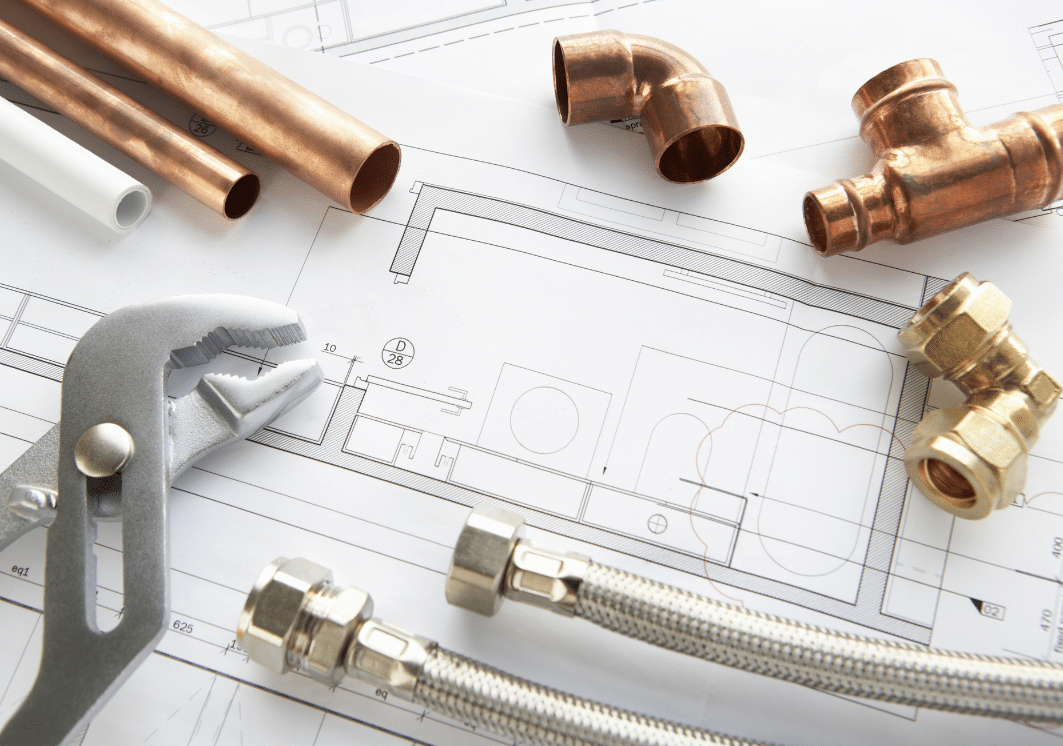Plumbing is a critical component in the construction of a new home, laying the foundation for a functional and sustainable living space. The complexity of installing a reliable plumbing system should not be underestimated, as it requires a careful balance between cost-effectiveness and quality.
Remember, when plumbing a new home, finding the sweet spot between quality and cost for plumbing a new house can really make all the difference in your future comfort and budget!
Right materials
The key to achieving a lasting plumbing setup that doesn’t break the bank lies in selecting materials that offer durability at a reasonable cost.
PVC and PEX piping are popular choices; PVC is inexpensive and easy to work with, suitable for waste lines, while PEX is slightly more expensive but offers flexibility and is ideal for supply lines. It is vital to stick to local building codes, which dictate the types of materials that can be used.
For fixtures, consider those manufactured with solid brass or corrosion-resistant materials. They often come with longer warranties, ensuring your investment is protected. Balancing initial costs with the long-term lifespan of the materials can ensure cost-efficiency over the lifetime of your home.
Efficient layout planning
Efficient plumbing layout planning is crucial for minimizing waste and labor. Strategically group areas requiring water supply, like the kitchen and bathroom, on the same side of the house. This approach optimizes functionality and enhances convenience.
This approach conserves materials by reducing the length of pipes needed and simplifies the installation process, lowering labor costs. Concurrently, it is essential to ensure the layout provides easy access for future maintenance and avoids complex pathways that could cause issues down the line.
By being strategic with the plumbing blueprint, homeowners can significantly enhance functionality and cost efficiency. Consult a professional plumber for expert advice on optimizing the plumbing layout for your new home.
Hiring professionals
Investing in qualified professionals to install your home’s plumbing system is essential. Look for licensed and experienced plumbers with a solid track record of quality workmanship. Skilled tradespeople are more likely to install the system correctly the first time, which can significantly reduce the likelihood of costly future repairs or replacements.
Furthermore, they can give valuable insights into the most efficient systems and latest technologies, potentially saving homeowners on water and energy costs in the long term. Always ask for references and verify credentials to ensure that your plumbing is in capable hands.
Energy-efficiency
Incorporating energy-efficient fixtures and appliances, such as those with the ENERGY STAR rating, presents numerous benefits. These specially engineered fixtures and appliances are designed to consume less water and energy, resulting in reduced utility bills and a significant decrease in the home’s carbon footprint.
The latest technological advances have enabled energy-efficient lighting fixtures to deliver performance that is equal to or superior to other options. They are built to last and provide substantial savings over their lifespan.
By choosing energy-efficient fixtures, homeowners not only experience long-term cost savings but also contribute to environmental sustainability. It is a forward-thinking investment that aligns with modern eco-friendly standards and is favored by an increasing number of ecologically conscious homeowners.
Budget and cost
Developing an accurate plumbing budget necessitates meticulous preparation and foresight. Start by acquiring multiple estimates from reliable contractors to assess the typical installation expenses. Take into account the cost of top-notch materials that adhere to local regulations, as well as the labor fees of experienced professionals.
Establish a contingency fund of at least 10 to 15% for unexpected costs to prevent overspending. Manage expenses by prioritizing essential tasks and considering phased installations to spread out costs.
Always strive for quality by using subpar materials or unskilled labor, as this can result in higher costs in the long run due to repairs and inefficiencies. Keep a detailed record of all expenses to track your budget throughout the project.
